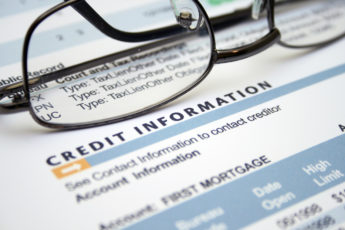What Is A Credit Score?
A credit score is a three-digit number ranging from about 300-850 that reflects your credit risk level. It is a snapshot of your credit risk at a particular point in time and is calculated using a mathematical equation with information from your credit report. Lenders use your score to evaluate your creditworthiness in a consistent and objective way; it helps them to decide whether to give you the loan or credit card. Consumers like it because no matter who you are as a person, your score only reflects your likelihood to repay debt responsibly. Typically a higher number indicates a lower risk, so the higher the number the better.
FICO (Fair Isaac Corporation) is the most commonly used. Your score may be different from lender to lender depending on the scoring model that was used. In addition, your credit score for an auto loan may be different from your score for a mortgage. Also, a credit score is a fluid number and changes as information is updated to your credit file. You could have three different credit scores from the three major credit bureaus (Equifax, Experian, and TransUnion) because the bureaus do not share the same information.
Also, a FICO score will have a different name at each of these credit bureaus:
Credit Reporting Agency – FICO Score
- Equifax
- BEACON®
- Experian
- Experian/Fair Isaac Risk Model
- TransUnion
- EMPIRICA®
What Does Your Credit Score Mean?
Your credit score is a snapshot of your credit risk at a particular time and ranges from about 300-850, the higher the score the better. Keep in mind it varies from lender to lender and depends on which credit report is referenced. No score says whether you will be a ‘good’ or ‘bad’ customer. Each lender has his own strategy and there is no single ‘cut-off score’ used by all lenders; there are many additional factors to consider. Also, as new information is added to your credit report your score will change.
To get a better understanding of your score, become familiar with the following five main categories listed below with their general percentage of importance. Credit scores take into account all of these five categories, including positive and negative information:
- Payment History: 35% – Do you pay your bills on time or are you late? Basically the score takes into account your payment information as reported in your credit report. If you are late, it considers how late your payment was, how much was owed, how recently the late payment(s) occurred and how many there are. The score also takes into account adverse public records (bankruptcy, judgments, liens, collection activity, wage attachment, etc.)
- Amounts Owed: 30% – Do you owe a lot to creditors? Are you overextended and nearing your credit limits? Your score considers the amount owed on all accounts, on different accounts such as credit cards and installment loans, and balances.
- Length of Credit History: 15% – How long have you been using credit? In general, a longer credit history will increase your credit score. If you have been using credit for a short time, don’t open a lot of new accounts too quickly. New accounts will lower your average account age, plus too many can look risky.
- New Credit: 10% – Have you applied for a lot of new credit recently? How many new accounts do you have? How many requests for credit have you made, as indicated by inquiries on your credit report? Inquiries can remain for two years, although FICO only considers inquiries from the last 12 months.
- Types of Credit in Use: 10% – Is it a healthy mix? Your score takes into account what kinds of credit accounts you have, such as retail accounts, installment loans, finance company accounts and mortgage loans. It is not necessary to have one of each and it is not a good idea to open accounts you don’t need. The credit mix is generally not a key factor in your score, but it will be more important if you do not have a lot of other information to be used.
Tips To Improve Your Credit Score
After seeing your credit score and reviewing the five categories used to calculate it, you will want to consider the following four areas to improve your score:
- Pay bills on time- Payment history is the single most important factor in determining your credit score, and paying bills on time is one of the fastest ways to improve your score. Delinquent accounts can devastate your score. Missing even one payment can knock 50-100 points off a good score.
- Pay down your debts- Paying down debts is another quick way to improve your score. Charge less and pay more on your balances. Lenders want to see a lot of breathing room between the amount of debts and credit limits. When you pay down your debt, you increase the gap between your balance and limit, which helps your score.
- Keep closed, paid-off accounts open- Closing accounts can hurt your score because it lowers the amount of total credit available to you and makes your balances appear larger in credit score calculations. Also, closing old accounts will shorten the length of your credit history and make you seem less creditworthy.
- Avoid bankruptcy- Bankruptcy should be a last resort. Filing bankruptcy is worse than delinquencies, loans or collection activity and can knock 200-300 points or more off a good credit score. If your score was slowly on the decline due to missed payments, late payments, and/or charge-offs prior to filing bankruptcy, you will see less of a reduction. Once your score falls below 620 (which it often does after filing bankruptcy), credit opportunities will be scarce and costly. If you are overwhelmed with debt and are considering bankruptcy, know the impact it will have on your credit score and seek good objective advice before filing.
